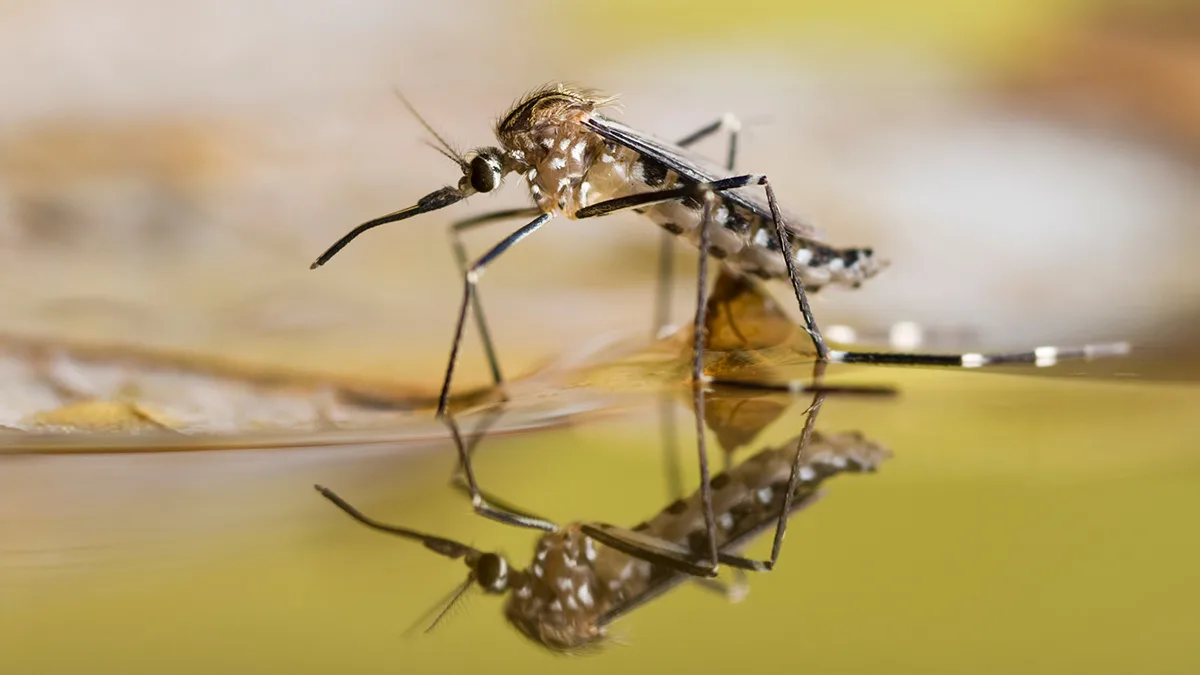
Overview
Researchers at Baylor College of Medicine are developing a novel genomics surveillance program to track any infectious disease parasites transmitted by mosquitoes.
Novel effort could focus control and prevention efforts
The battle against mosquito-borne diseases, such as West Nile Virus and Eastern Equine Encephalitis, may be going genomic.
Researchers at Baylor College of Medicine in Houston are developing a novel surveillance program for detecting mosquito-borne pathogens by sequencing mosquito genomes – and any viral genetic material the mosquitoes contain. The information gathered in this way could be used to develop county-level maps of both of disease-causing pathogens and the mosquitoes that transmit them.
“We’re putting together a program that will monitor the Gulf Coast area,” said Ginger Metcalf, Executive Director of Strategy and Project Development at Baylor’s Human Genome Sequencing. The goal, she says, is an ambitious one: to track “any infectious disease parasites transmitted by mosquitoes.”
Their project is poised to create actionable situational awareness at the level of microbial genomics. Armed with the new information, along with standard measures, public health officials could focus their mosquito-control and disease-prevention efforts on communities at highest risk.
The program, which is still in the planning stages, is the brainchild Peter Hotez, MD, PhD, Dean of the National School of Tropical Medicine at Baylor College of Medicine, a leading expert in mosquito-borne and neglected tropical diseases.
“The Gulf Coast is the tip of the spear of [mosquito]-borne diseases in the United States,” Hotez said. “All the predictive modeling says it’s going to happen here first, and we’re already seeing it.”
The risk in the Gulf states is dire, Hotez told Cure, because the region is warming so rapidly. Summer water temperatures in the Gulf of Mexico, one of the clearest indicators of climate change, have reached record highs, with surface temperatures touching 90F degrees, according to recent measures of sea surface temperature.
Mosquitoes like warm weather. Warmer temperatures ramp up mosquito development and hasten the incubation of disease-causing viruses within mosquitos. Higher humidity and increased rainfall create more mosquito breeding grounds.
Rising temperatures are also increasing mosquitoes’ geographic range as the tropics expand north and south toward the poles, transforming regions that were once considered sub-tropical, such as the Gulf Coast, with tropical heat, humidity and rainfall.
“We have more heat, more rain – we’ve always had a lot of that in Houston, but it’s getting worse,” Metcalf said.
Mosquitoes are opportunistic and thrive in communities with poor sanitation, and objects such as tire dumps, where stagnant water pools, are an ideal location for mosquitoes to breed.
West Nile Virus and Eastern Equine Encephalitis have already begun to circulate in parts of the U.S. Viruses that cause Yellow Fever, dengue, Oropouche and Zika Virus – which occur in South America -- may soon come knocking.
“The predictions are that dengue is going to be a regular occurrence,” Hotez said, possibly along with Zika and Chikungunya viruses.
In most people, infections of Zika virus causes mild-flulike symptoms. In pregnant women, however, the virus can lead to fetal malformations. Chikungunya causes fever, rash and agonizing joint pain and swelling. Oropouche caused fever, headache, joint pain, sensitivity to light, vomiting and rash. In severe cases, sufferers may develop encephalitis.
Other factors play a role too, including rapid deforestation of the Amazon and encroachment of mosquito populations into more densely populated areas. Yellow Fever, which is most common in Africa but occurs sporadically in Central and South America, could well stage a comeback.
“It’s already spreading out of the Amazon to more populated areas of Brazil and it’s moving fast,” Hotez said. Nobody understands how destabilizing an epidemic of dengue or Yellow Fever could be, Hotez said, adding, Yellow Fever “is a disease with 30 percent mortality, and we have no vaccine or treatment for it.”
An epidemic of Yellow Fever, he said, “would make COVID-19 look like a sideshow.”
Hotez said federal, state and local officials are so overwhelmed with other concerns that they only pay attention to mosquito-borne disease when it crops up in their communities. He is hoping that genomic surveillance will assure that – should Yellow Fever or Dengue arrive – officials are not caught unawares.
Metcalf said the foundation of the analysis will be genomic sequencing that can distinguish between the pathogen, the insect vector and the human to see how they interact and what the outcome of that interaction is.
“It’s exciting, it’s quite novel,” she said. “It brings together different disciplines and genomic technology to look at potential public health concerns around climate change, infectious diseases and diseases caused by vectors such as mosquitoes.”
Using genetic sequencing for disease surveillance is different than the standard approach to pathogen detection, Metcalf said, because you cast a much wider net.
In diagnostic testing, doctors use polymerase chain reaction (PCR) technology to detect small amounts of specific genetic material in blood, saliva or other body fluids. PCR testing is “very useful for diagnosis,” she said, but it “implies that you have some awareness of what you’re looking for.”
For surveillance, Metcalf said, imagine that you have “a blender filled with a disgusting biological smoothie, with mosquito larvae from the Gulf. You could sequence everything from that smoothie.”
Modern gene sequencing technology can decipher genomes swiftly. The first human genome took six years, involved multiple collaborating centers and cost approximately $3 billion dollars. Baylor has 12 sequencing machines, each one of which can sequence 128 whole human genomes a day. The genomes of viruses and other pathogens are comparatively tiny; the challenge will be to analyze the data.
“You compare the sequences with those in databases of known pathogen genomes created over decades by the National Institutes of Health, Centers for Disease Control and Prevention, and World Health Organization,” Metcalf said. “You use this framework to understand what’s in the sample based on how the genomes in the sample map to these databases.”
The findings would be entered into a map that would enable county-level health officials to track pathogens – hopefully before they cause disease. And the information could be used to narrow the focus to concentrate on the viruses that pose the biggest risk.
“If we found there was some new crazy strain of Zika coming out of the Third Ward and this was a potential problem, we might decide to develop a more targeted assay we can use to identify samples from that region.”
Hotez said the need for expanded testing is only going to grow.
“Dengue is accelerating, Yellow Fever is accelerating, Oropouche is accelerating and nobody is applying PCR,” he said. “We want to create an unprecedented county map of what’s emerging right now in the U.S.”








